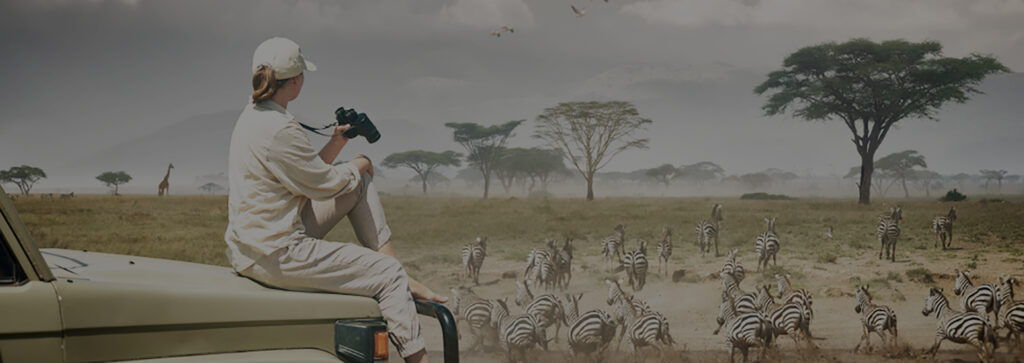
Each year millions of wildebeest, zebra and gazelle move across the Serengeti plains in search of green grass and fresh water. The southern and northern plains of the Serengeti are the two main feeding grounds for the herds. The animals are constantly on the move between these two areas each year. Their location can be roughly predicted at a given time of the year, although this is dependent on rainfall patterns.
What are the best places to see the Migration?
The wildebeest migration happens all year – the migration can be found during any given month; you just need to know where to look! The question should really be about the ‘best places’ to see them during a certain time of year.
The Serengeti Migration Cycle:
November, December: The short rains begin around early November. Shortly after this (late November & December), the animals arrive on the short-grass plains of the Serengeti. These are south and east of Seronera, around Ndutu
January, February and March. The animals stay in the same area, with most wildebeest calves born in February. Every day for about three weeks, an estimated 8000 foals are born.
April, May: The animals start their great migration north in search of fresh grazing and water.
June: The animals congregate on the south side of the Grumeti River, in the Western Corridor. The river here is normally a series of pools and channels, rather than a continuous river. The animals provide an annual feast for the Grumeti River’s large crocodiles, but these river crossings are not quite as spectacular as the crossings of the Mara River in the north.
July and August: The migration continues moving northwards, often spreading out across a wide area. Some head through Grumeti Reserve and Ikorongo, others north through the heart of the Serengeti National Park.
September: The herds spread out across the northern Serengeti, where the Mara River provides the migration with its most serious obstacle. This river gushes through the northern Serengeti from Kenya’s adjacent Maasai Mara Game Reserve. If you are lucky enough to see a crossing, it is spectacular.
October: The herds are migrating again: all are heading south, through western Loliondo and the Serengeti National Park’s Lobo area, returning to the green shoots which follow the rains on the short-grass plains of the southern Serengeti.